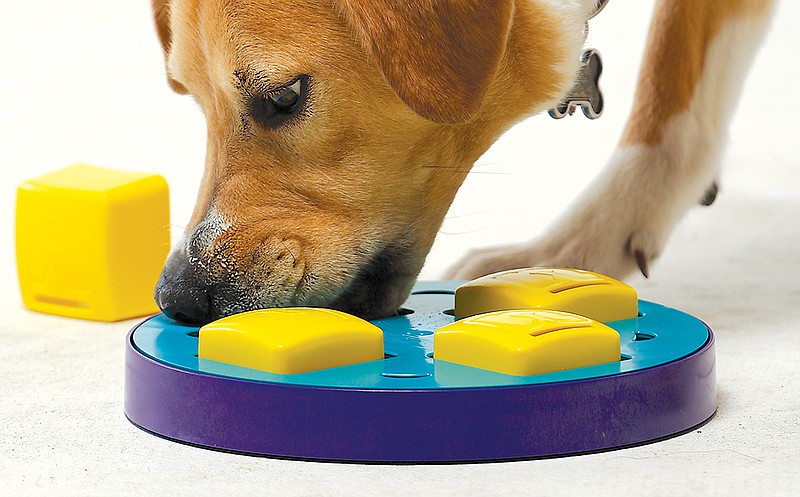We show our pets love through a multitude of ways: We give them affection when we're home, dole out treats for good behavior (and sometimes, just because), get them groomed when they seem uncomfortable and much more. However, many people are still missing a key component of pet care: mental stimulation.
Little Fido might not be able to discuss current events or understand the book you are reading, but enrichment is crucial for animals, says Dr. Denise Radford, associate veterinarian at Applebrook Animal Hospital in Ooltewah. Whether or not those opportunities are provided can make a difference between a well-behaved and a destructive pet, she adds.
Luckily, today's markets are saturated with products to help you enrich your animal's environment. And, Radford says, many provide lasting benefits to keep your pup's or kitten's mind sharp as they get older.
"The concept of enrichment may seem abstract to [some people] because they don't understand why the dog might need something to do while you're cooking dinner or watching TV. But they often do," she says.
The problem with pet boredom stems often from the fact that, unlike in the wild, pets do not spend a large portion of their time foraging for food. Because of this, they require other stimulation to work the brain, Radford says.
The stimulation could be as simple as providing more areas where pets can enjoy looking out a window, or purchasing music created with specific tones to calm them while you're away. But the simplest can actually be the most important: a puzzle feeder, which requires your pet to use its brain to get to food and simulates a different feeding experience.
"It's really good for the mental health of the animal and therefore your mental health as well, because they'll be behaving," Radford says.
Another easy stimulus for an active dog owner is making certain to walk different routes, allowing your pooch to encounter new smells. For cats, providing cat trees and multiple scratching posts can offer the same release of endorphins and capture the same interest.
"It's similar to the endorphins we release when we work out or eat something delicious," Radford explains.
An enriching home is particularly crucial for dogs with separation anxiety, she says.
"Most animals, when you leave, are spending a lot of time just thinking about you and waiting for you to come home," she says. "Think about it like your mom - if she knows you usually come home at a certain time and she worries if you haven't, what happens when you can't notify her?
"A lot of people view it as their dog is really missing them or sad, but they feel that you may never come back or without you something awful may happen to them. They're literally having a panic attack."
Creating an enriching home
Start by getting a food puzzle. Radford suggests the Kong brand, which comes in a variety of sizes and options which are also some of the most durable. Or, for single-pet homes, owners can hide food in several spots around the house to keep pets "hunting" while they are away.
Make sure your pets have a variety of toy textures, shapes and smells. Often, once animals get used to certain ones, they will lose interest, so rotating and replacing them can make a difference in enthusiasm. For those who want to splurge, young pets may benefit from technologically advanced toys that allow owners to throw tennis balls or disperse treats from a machine via a phone app.
Leave music designed for your cat or dog on while you are away. Although humans aren't capable of hearing some of the tones played, they can be calming to creatures. Specifically, preliminary research has shown "Through A Dog's Ear" and "Through A Cat's Ear" can be effective for anxiety-ridden pets.
"It's easy. It's not asking to take a dog for a five-mile run every day, because that isn't realistic for many people," Radford says.
